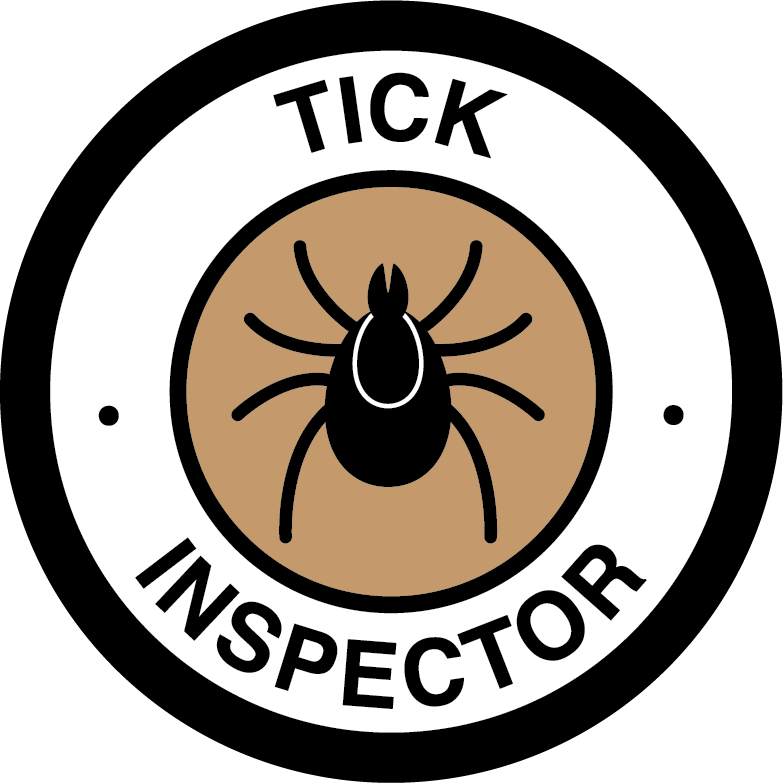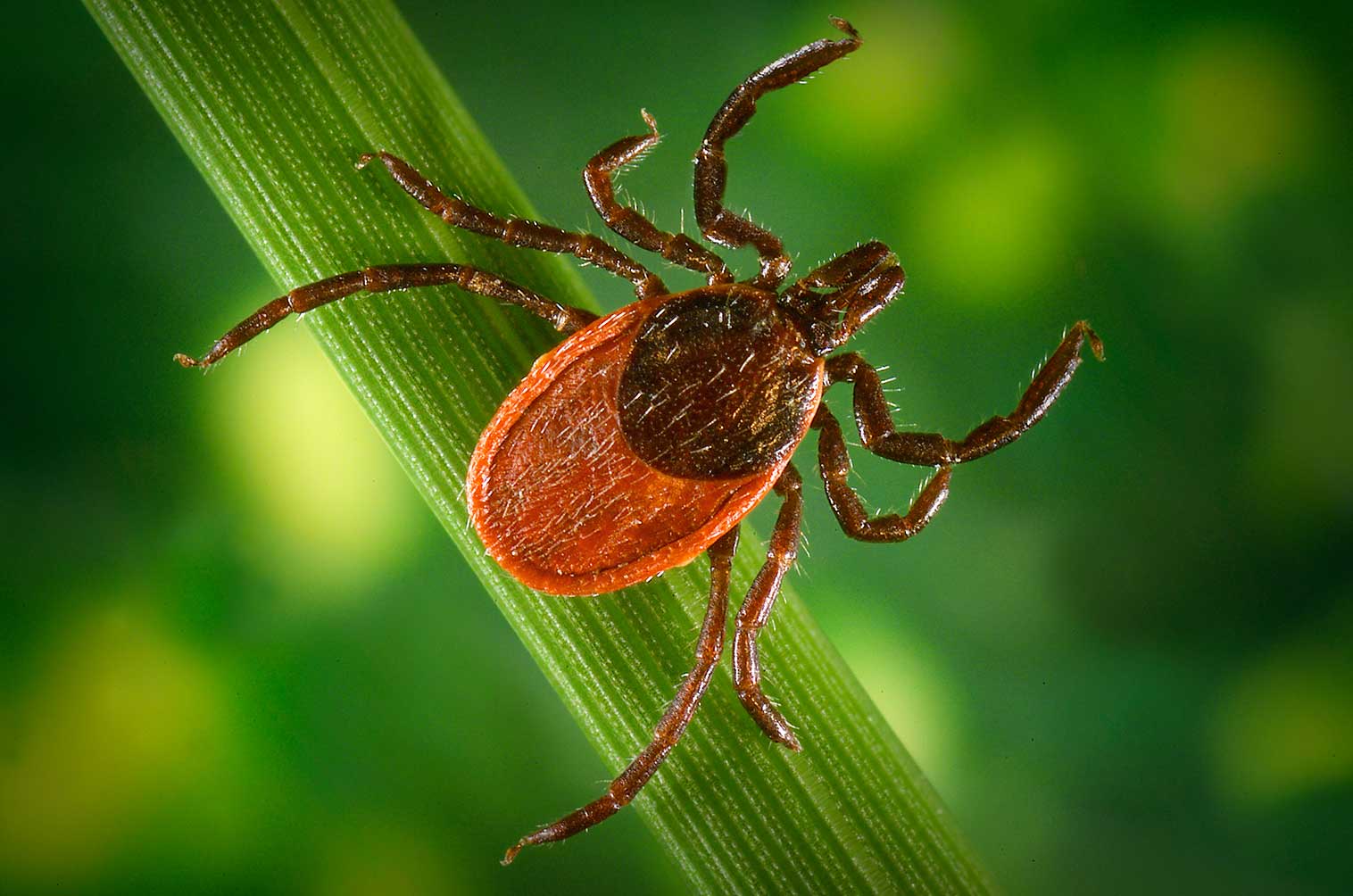The web Browser you are currently using is unsupported, and some features of this site may not work as intended. Please update to a modern browser such as Chrome, Firefox or Edge to experience all features Michigan.gov has to offer.
Ticks
Ticks
 There are over 20 known tick species in Michigan. Most often, ticks survive by feeding on wildlife. Several species of ticks are known to bite people and pets and may harbor dangerous bacteria, viruses or parasites. Not all ticks carry diseases. Tick-related diseases such as Lyme disease do occur in Michigan. Tick-related diseases can be serious or fatal if not properly diagnosed and treated.
There are over 20 known tick species in Michigan. Most often, ticks survive by feeding on wildlife. Several species of ticks are known to bite people and pets and may harbor dangerous bacteria, viruses or parasites. Not all ticks carry diseases. Tick-related diseases such as Lyme disease do occur in Michigan. Tick-related diseases can be serious or fatal if not properly diagnosed and treated.
To learn more about ticks found in Michigan and the diseases they can spread, read the Michigan Department of Health and Human Services (MDHHS) Ticks and Your Health brochure.
Citizen-reported tick data are available on the MiTracking Data Portal.
-
Common Michigan Tick Types
Of the 20 known Michigan tick species, some are more likely to bite humans than others. The top 5 most likely to bite humans are:
- American dog tick (about 70% of ticks submitted in Michigan).
- Blacklegged tick (about 20% of ticks submitted in Michigan).
- Lone star tick.
- Woodchuck tick.
- Brown dog tick.
-
Tick-related Disease
Michigan has several tick-borne diseases including:
- Anaplasmosis.
- Babesiosis.
- Ehrlichiosis.
- Lyme disease.
- The bacterium Borrelia burgdorferi causes Lyme disease. The bacterium is transmitted by the blacklegged tick (also known as the deer tick), if infected. It is the most reported vector-borne disease in the U.S. Lyme disease is spreading across Michigan.
- Powassan Virus.
- Rocky Mountain Spotted Fever.
-
Risk
Many types of ticks bite people in the U.S. The chances that you might get a tick-borne disease from a single tick bite depend on many factors like the type of tick, where it came from and how long it is attached to you. Remember only blacklegged ticks transmit the bacteria that cause Lyme disease.
-
Prevention
Avoiding tick bites and promptly removing ticks are the best ways to prevent infection from tick-related disease. Learn more about tick bite prevention below:
Avoid areas with a lot of ticks.
Ticks generally prefer shady, moist areas in wooded and grassy locations.
- Be extra vigilant in warmer months (April – September) when ticks are most active. Ticks can be active at 40⁰F.
- Stay on well-groomed trails and avoid high grass, brush and fallen leaves.
- Learn ways to keep your home and yard tick-free (see page 12).
Check skin and clothes for ticks after being outdoors.
- Perform daily “tick checks,” including your armpits, scalp and groin.
- Remove ticks from your clothes before going indoors.
- Place clothes in a dryer on high heat for at least 10 minutes to kill ticks you missed.
- Shower soon after coming indoors.
- Don’t forget to check your pets for ticks. Talk with your veterinarian about tick prevention medicine.
.png?w=50%25&rev=4e4169959c6a4f8d9c878ff152b35381&hash=9F7D9B970368F74A94704F1D52CA6A6C)
Use insect repellents.
Insect repellents are effective at repelling ticks. Apply Environmental Protection Agency (EPA) approved repellents to clothing and skin. Always read and follow the label directions for proper application and safety concerns whenever using an insect repellent. Store repellents away from children and pets.
-
Tick Removal/Tick Bite
How to remove an attached tick:
- Use fine-tipped tweezers to grasp the tick as close to the skin as you can.
- Pull upward with steady, even pressure. Don’t twist or jerk the tick.
- After removing the tick, clean the bite area and your hands with rubbing alcohol or soap and water. Never crush a tick with your fingers.
-
Tick Identification
Expert tick identification is available for Michigan residents for free through MDHHS. You can either email a picture of the tick to MDHHS-Bugs@michigan.gov or you can mail the tick to the MDHHS for identification. Free tick submission kits are available from your local health department.
-
Medical help
See your doctor when necessary
If you are bitten by a tick, monitor your health. If you develop a rash or fever within a month of removing a tick, see your doctor as soon as possible. Be sure to tell your doctor about your recent tick bite and when the bite occurred. To learn more about Lyme disease signs and symptoms, diagnosis and treatment, visit MDHHS - Michigan Emerging Disease: Lyme Disease.
-
Climate Change
Climate change may affect human and animal health in serious ways through the spread of existing and new vector-borne diseases. Some ticks are disease vectors, meaning they carry and spread disease. Changes to the climate, such as milder winters and longer, hotter summers contribute to a longer and more active tick season. Lyme disease is the most common tick-borne disease in the U.S. and cases are increasing in Michigan.
-
Data - MiTracking
MiTracking Tick Indicators
- Number of ticks reported.
MiTracking Tick Data Can Tell Us
- The number of ticks reported by year, county and selected types of tick.
- If the number of ticks reported is going up or down over time.
MiTracking Tick Data Cannot Tell Us
- The total number of ticks in a county.
- If the ticks were found on a human, on an animal or in the environment.
- Incidence of tick-related diseases (e.g., Lyme disease).
- Your likelihood of encountering a tick.
- Your likelihood of getting a tick-related disease.
Find Out More
This dataset was created through the MDHHS Emerging and Zoonotic Infectious Disease Section (EZID) Tick Identification Program. MiTracking has released these data in collaboration with EZID. For more data information, visit:
- About These Data (found on the data portal after a query search).
- Metadata (technical information about the content, quality and context of the data).
-
Learn More
MDHHS
EZID
- Lyme disease.
- Materials:
- Publication Order Form.
Environmental Health Bureau
Michigan Climate and Health Adaptation Program
National
Centers for Disease Control and Prevention
National Institute for Occupational Safety and Health
Environmental Protection Agency
-
MiTracking Resources
